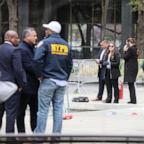Jaycee Dugard: Top 11 Missed Chances to Stop Her Kidnapper, Phillip Garrido
Three different government bodies failed to stop Phillip Garrido.
July 8, 2011 — -- The Jaycee Dugard case is a story of more than two decades of failures by three separate governmental entities that were supposed to supervise Phillip Garrido, the registered sex offender who would hold Dugard captive for 18 years. The United States Parole Commission, the California Department of Corrections and Rehabilitation and the local Contra Costa Sheriff's office all missed opportunities to prevent or stop Garrido's unspeakable crimes. Here are some of their most glaring alleged mistakes.
1. Releasing Garrido: The first big mistake was apparently made by the U.S. Parole Commission, which released Garrido from prison on Jan. 20, 1988. After kidnapping Katie Callaway Hall in 1977, Garrido received a 50-year federal sentence. In his 2009 report on the California Department of Corrections and Rehabilitation's supervision of Garrido, California Inspector General David R. Shaw called Garrido's release "inexplicable." Had the U.S. Parole Commission never let Garrido go, he would have never been able to abduct, rape and father children with Jaycee Dugard.
2. Early Parole Termination: The U.S. Parole Commission granted Garrido early termination of his federal parole on March 9, 1999, basing its decision on his clean record. At the time, a U.S. parole agent wrote Garrido a letter thanking him for his "cooperation," according to parole documents released to the media last year.
3. Multiple Home Visits Missed Crime Despite Dugard Sighting: The California Department of Corrections took charge of Garrido's supervision in 1999. The California Inspector General's report said that CDCR officers paid 60 home visits to Garrido between June 1999 and August 2009 when he was arrested for abducting Dugard. Yet during those visits, parole officers failed to detect Dugard and her daughters living on Garrido's property, despite some obvious evidence. A 2010 report from the California state attorney general's office later revealed that parole agents had in fact seen and spoken to Dugard but also failed to take action. It was not clear when agents made contact with Dugard.
4. No Action Taken on Girl Seen at Garrido's Home: On June 17, 2008, a parole officer noticed the presence of a 12-year-old girl -- later determined to be one of daughters Garrido fathered with Dugard -- on Garrido's property during at least one visit but failed to act. At the time, Garrido said the girl was his brother's daughter, according to the California Inspector General's report. Garrido's brother does not have a daughter. "If the parole agent had taken this basic investigative step (of contacting Garrido's brother), he would have determined that Garrido had been dishonest and could have investigated further," the IG's report said.
The report also cited the following failures by authorities:
5. Wrong Classification: The CDCR failed to adequately classify Garrido, given his history as a violent sexual predator, and failed to supervise him accordingly.
6. Late Visit: A parole agent for CDCR did not first visit Garrido's home until 2000, even though CDCR parole officers were assigned to the case in 1999.
7. Missing Information: The CDCR failed to obtain key information from federal parole authorities about Garrido.
8. Poor Communication: The CDCR failed to talk to neighbors or local public safety agencies about Garrido.
9. Missed Clue -- Utility Wires: The CDCR failed to investigate visible utility wires running from Garrido's house toward the concealed compound where Jaycee Dugard was kept prisoner.




